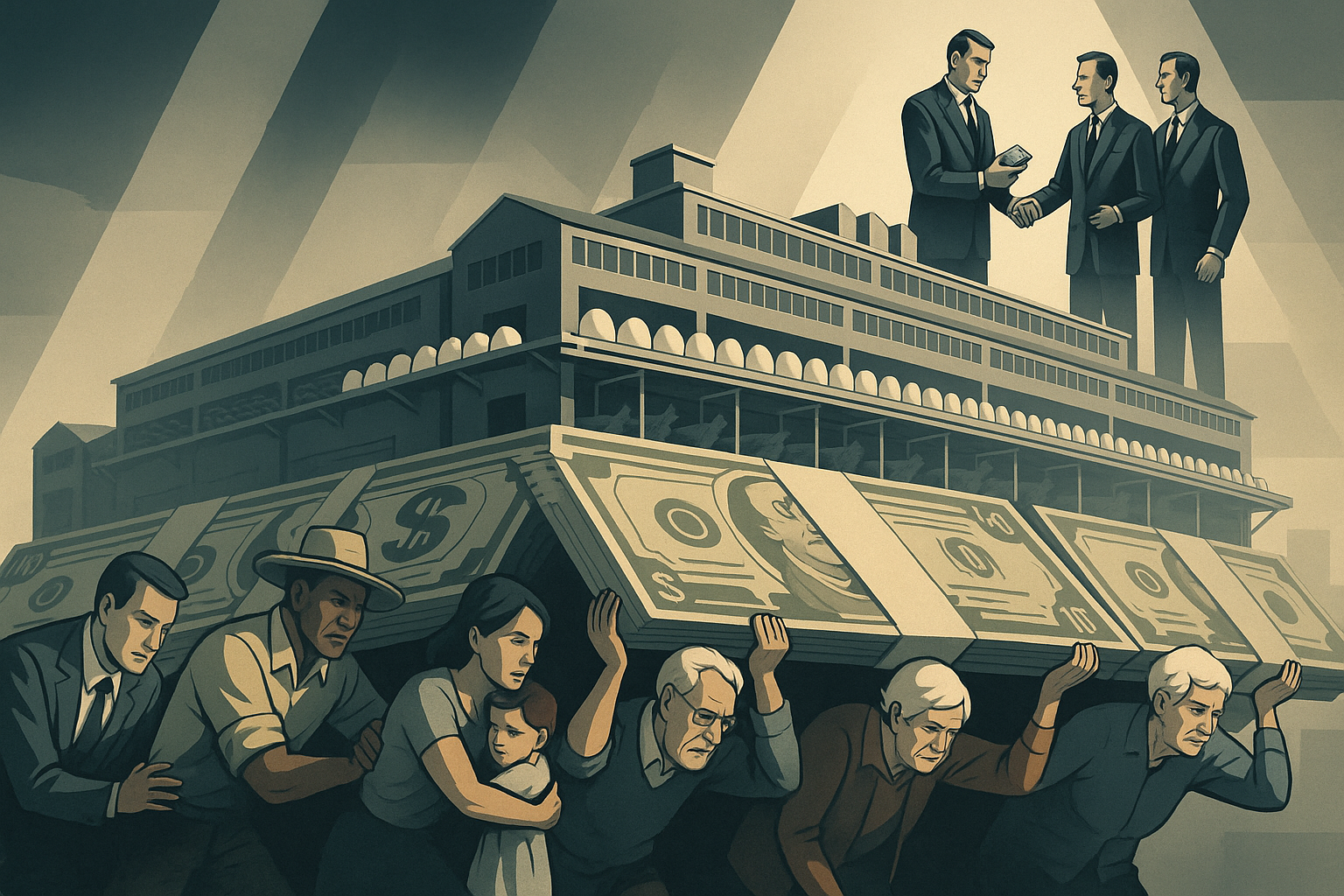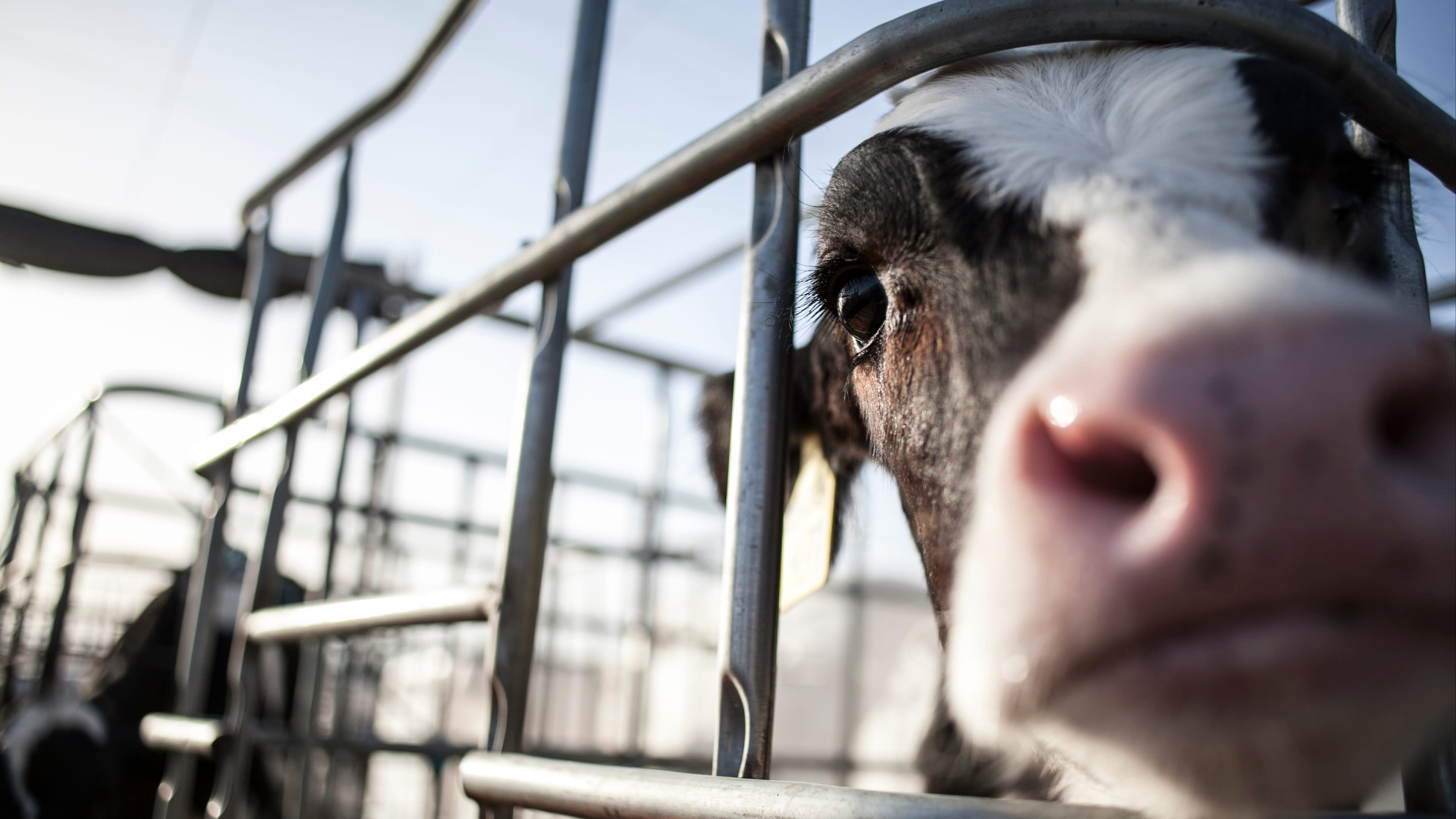The Real Egg Subsidy Boondoggle: Why Are Taxpayers Propping Up Factory Farms?





Billions in taxpayer dollars flow to giant egg corporations every year—even as cuts loom for schools and social programs. If you care about government waste, it’s time to follow the money.

Why are we bankrolling billion-dollar egg corporations that trap hens in tiny cages?
Imagine this: You’re tightening your family budget. You cut out luxuries, focus on what matters, and expect your tax dollars to be managed just as carefully. But hidden in the fine print of the federal budget is a massive line item—one that quietly funnels billions of taxpayer dollars to some of the most profitable caged egg conglomerates in the country.
Sound familiar? If you’ve ever shaken your head at government waste, here’s a story you’ll want to hear.
The caged egg industry’s subsidy addiction
Let’s start by clearing up a common misconception: subsidies for “struggling family farmers” aren’t going to your neighbors down the road. In reality, more than $30 billion a year in animal agriculture subsidies are funneled into propping up factory farm giants—often at the direct expense of smaller, community-oriented farms.
The Environmental Working Group found that the top 10% of farm businesses collected nearly 80% of animal agriculture (commodity) subsidies from 1995 to 2021. Who are these “top 10%”? Not your local egg farm. We’re talking about vertically integrated, multinational corporations buying up competitors and squeezing farm families out of business—all while collecting government checks.
And let’s be honest: when was the last time you saw a bailout for your local grocer, mechanic, or small business owner?
Where does the money go?
Here’s where the waste gets even more egregious:
- Subsidies for animal feed: Most of these payouts don’t even go to eggs—or people. Instead, they underwrite cheap corn and soy, which are funneled into animal feed. In fact, 78% of Americans say they want subsidies to support food grown for people, not livestock feed.
- Direct payments & disaster relief: Even when disease outbreaks (like the recent bird flu crisis) devastate chicken flocks, billion-dollar firms get more government aid—over $1.46 billion since 2022 to keep the industry afloat, regardless of how those animals are raised or brutally slaughtered. To add insult to injury, factory farms get this money without having to take steps to mitigate the possibility of disaster in the first place.
- Taxpayer-funded pollution: Meanwhile, those same companies are responsible for pollution and deforestation—costs that communities, taxpayers, and future generations are left to clean up.
Even the CATO Institute—a cornerstone of conservative, free-market economics—recently called on Congress to rethink these “extensive subsidies,” noting how they “distort the economy, can harm the environment, and flow mainly to the largest producers.”
Even some new agency heads like the USDA’s Brooke Rollins are raising red flags about inefficient spending—and have opportunities to make meaningful changes. If you’re looking for bipartisan agreement about where to cut government waste, this is it.
Egg prices up, transparency down
Millions of egg consumers have probably felt the shock at the grocery store: carton prices spiking, shelves occasionally bare. Yet the industry’s profits remain robust for mega-corporations like Cal-Maine, thanks in large part to government protection. Instead of encouraging a resilient, transparent food system that actually rewards efficiency and innovation, and rejects the worst forms of cruelty in our food system, our policies keep shoveling taxpayer dollars into a model that’s anything but accountable.
And for what? To keep hens in tiny wire cages, churn out “cheap” eggs (that really aren’t so cheap after all), and silence smaller, more responsible farms that could feed communities directly.
What would real reform look like?
If we want a government that works for taxpayers—not just corporate lobbyists—it’s time for a reset:
- End subsidies that prop up cruel confinement. When subsidies pay for caged egg production, we’re supporting the worst forms of animal suffering and inefficiency. Redirecting those funds to farmers growing nutritious food for people would be both smarter and fairer.
- Reward transparency and resilience. Producers who invest in safer, more sustainable practices—such as cage-free production, as a bare minimum—shouldn’t be penalized for doing the right thing. Let’s create incentives for real stewardship, not corporate secrecy.
- Back community farms, not mega-corporations. Public investment should help family farmers and rural communities, not just the next agribusiness merger.
You can help cut the waste
If you’re tired of seeing your tax dollars wasted—whether you care about animal suffering, fiscal responsibility, or just getting a fair shake for your community—this is your moment. Speak up. Call your representatives. Ask them where your money is going, and why it’s still bankrolling the egg industry’s bad habits.
Want to do more? Share this article, start a conversation, or join campaigns demanding a better return on your investment. Because when enough of us ask for transparency and common sense, politicians have to listen.
 Patrick Kerr
Patrick Kerr





